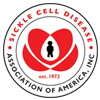Trusted Resources: Evidence & Education
Scientific literature and patient education texts
Home Care for Children with Sickle Cell Disease
source: UC Health
summary/abstract:Sickle cell disease is an inherited disorder in which red blood cells become C-shaped. This causes impaired blood flow, pain, and other health problems. Symptoms usually show up by about 5 months of age.
Although a child who has sickle cell disease should be under a healthcare provider’s care, parents can do many things at home to reduce symptoms and maintain the child’s health.
Take these steps to prevent infections:
-Contagious diseases like the flu can be dangerous for children with sickle cell disease. They, as well as their caregivers and family members, should wash their hands several times a day with soap and water to reduce the spread of the flu virus and other germs.
-Children with sickle cell disease are also vulnerable to illness from a bacterium called salmonella. To avoid salmonella, they should avoid eating raw or undercooked meats and eggs.
-They should also avoid touching reptiles. They can carry the bacterium.
-Make sure your child’s immunizations are up to date.
read moreRelated Content
-
Hydroxyurea Treatment for Children with Sickle Cell Diseasehttps://www.youtube.com/watch?v=nx7MvMje...
-
Sickle cell patient with severe anemia rapidly improves with voxelotor, case study showsGlobal Blood Therapeutics (GBT) reported...
-
A Multicenter Phase II Trial of Unrelated Donor Reduced Intensity Bone Marrow Transplantation for Children with Seve...Background: Children with severe sickle...
-
Phytomedicines (medicines derived from plants) for sickle cell diseaseBACKGROUND: Sickle cell disease, a comm...
-
The Life, Death, and Dream of a Research Diversity Crusader“We want to have a nation in which the...
-
Emmaus, a leader in sickle cell disease treatment, signs agreement with Cardinal Health to solidify distribution net...Emmaus Life Sciences, Inc. announces...
-
Successful Gene Therapy for Sickle Cell DiseasePrior to this report, the only curative ...
To improve your experience on this site, we use cookies. This includes cookies essential for the basic functioning of our website, cookies for analytics purposes, and cookies enabling us to personalize site content. By clicking on 'Accept' or any content on this site, you agree that cookies can be placed. You may adjust your browser's cookie settings to suit your preferences. More Information
The cookie settings on this website are set to "allow cookies" to give you the best browsing experience possible. If you continue to use this website without changing your cookie settings or you click "Accept" below then you are consenting to this.




 +myBinder
+myBinder
